17 Mar
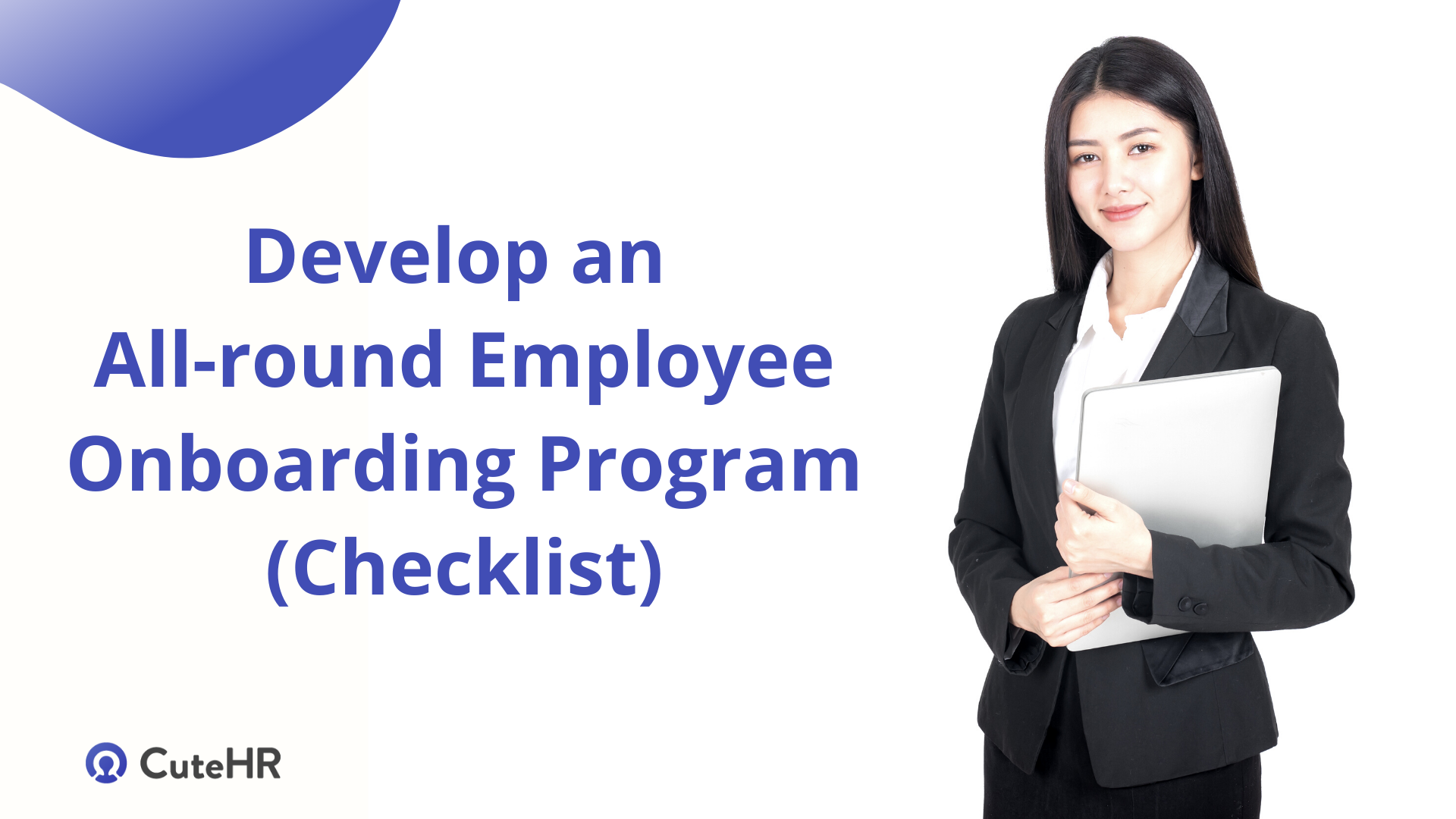
All organisations must consider the very first day of a new employee as an opportunity. An opportunity to present the best aspects of their institution and make them feel welcomed. The goal is to get the new recruits on board with a professional employee onboarding procedure. Hence, there is always an open window for each organisation to create a lasting first impression.
Recruitment and hiring talent alone, cannot contribute and bring about overall effectiveness to the organization. It is the successful employee onboarding that tags along as a mandatory practice. It is the process of equipping and aiding the new hires with the necessary tools to work efficiently and adjust to their office environment. Not only this, it must inculcate warmth and a sense of belongingness in the newly recruited staff.
Employee onboarding, as complex as it sounds, is merely a good combination of all those exercises and training that the HR department conveys to freshers. There are a number of career transitions over a year. This shift demands even smoother functioning and better understanding. Nothing but the process of onboarding can solve such organizational issues. To facilitate the ease of getting started with onboarding, there are various onboarding checklists too. They can be made use by the HR Managers and supervisors to increase the efficiency of onboarding.
The HR managers and departments should understand the sensitive yet vital process that onboarding is.
Research has brought to light that all new employees get upto 90 days to prove themselves. As per a research published in the Academy of Management Journal, that conducted a study of 264 new recruits, the first 90 days were deemed as pivotal. It is in these 90 days that employees get to showcase their talent, mingle with the co-workers and build a rapport with the company management. Only by undergoing a successful onboarding can an employee gather and learn the values, ethics, goals and attitudes of the new organization. For this reason, the onboarding process is also labelled as organizational socialization.
A process of such essentiality is surprisingly missing from most organizations. The lack of resources to erect a development plan for onboarding creates a big void between the employees and the organization.
To provide a fruitful onboarding experience will allow the managers, supervisors and the organization as a whole to :
- Detect and solve any skills gap in the newly hired.
- Give room to the new employees to showcase their talents and skills. This will amp up their speed to yield productive results.
- To convey and work towards organisational goals and objectives.
- Solve any queries or problems that the new employees may face.
It is the comprehensiveness and the formalities that an onboarding experience provides which accounts for the success of an employee onboarding program. The entire idea of onboarding revolves around creating transparency.
Table of Contents
Employee Onboarding Explained
The onboarding process is a must for all organizations. It is this process which is single-handedly significant enough to responsibly handle and train all the newly hired staff members.
To what depth the onboarding process is taken is an individual organization’s call. Not only small but big company giants swear by the usefulness of this process. As per the leading global beauty brand L’Oreal, “Our main aim is to develop successful, committed and mutually beneficial relationships with each of our employees”. To execute the essence of this company value, L’Oreal has functioning, full-fledged, 2 years employee onboarding program called the “L’Oreal Fit”.
Director of Internal Learning Practice at L’Oreal, Laurent Reich, opines that “Our objective…is to take our onboarding practices to the next level and to give each and every employee, from the moment they arrive, the keys to succeed in full alignment with company values such as multiculturalism, diversity and inclusion.”
Definitely to feel acclimated to the new workplace is one of the goals of employee onboarding. Many opine that an onboarding program directly points out to the company’s culture.
Types of Employee Onboarding.
With many functioning versatile companies and organizations, there are broadly two types of employee onboarding programs to adopt, as follows –
- Formal Onboarding – Here there is an explicit organizational onboarding program involved. Mostly, these written policies and procedures act as a guide for the newly hired. The formal onboarding helps regulate tasks and promote socialization. It shows that those employees who undergo a formal, well structured and detailed onboarding program, gain 34% faster proficiency.
- Informal Onboarding – There is no direct onboarding program involved here. The informal onboarding process is carried out without adhering to any written policies or steps. The new recruits learns about work and the culture indirectly or through the process of assimilation and adaptation.
The formal employee onboarding program is definitely more successful than its counterpart. A research study confirms this and labels it as more effective. The fixed number of steps in the formal process are much more comprehensive in nature.
It is the management’s call to opt for any kind of onboarding program from the above two. Initially, the HR Managers have to consult their organization’s board to set a fixed course that would bring onboarding into action.
With technology becoming the new reality, the onboarding process has also greatly benefited from it. Many companies and organizations are going with digital onboarding and prefer keeping it paperless.
A Peek Into Digital Onboarding
Digital onboarding is yet another progressive step towards a more defined, easier, trackable and streamlined onboarding process. An automated employee onboarding is what makes the Human Resource Department more equipped and better managed.
By utilizing the digital onboarding process, the HRs will have readily available and accessible documents. In fact, they can be easily updated with a single click.
With many organizations turning to digital onboarding, it has the following perks that make it better and advanced –
- Automation – Along with technology and digitization comes the benefit of automation. The hiring managers can easily track the progress of the new hires. Plus with going paperless, the dull task of rewriting and refilling the same information over and over is reduced. Plus unlike paperwork, the digital records can be well stored safely.
- Simplifies Tasks – To provide a much better onboarding experience to the new recruits and moreover for streamlining their tasks; digital onboarding is the answer. All newly hired can proceed steadily at their own pace, understand each nuance and may require considerably less assistance from the HR department.
Not only for the workforce, but digital onboarding can also be linked and bring about an integration of systems like ATS, payroll, performance managing forums and training units.
- Saves Money and Resources – Going paperless obviously will cut down the cost of using stationery. But it will also save space which otherwise would have been required to store the files. Going digital only calls for a one time investment on the software and transition.
- Increased Retention – Successful employee onboarding, be it digital or not, will definitely affect the retention rate. However, this retention rate can be positively influenced by the presence of a digital onboarding process more. The lack of boring paperwork, a much informative and interactive approach, the ease of access to all departments and co-workers absolutely will add on and speed up the onboarding process. Consequently, increasing the retention rate.
Levels of Onboarding
The onboarding process goes in a particular sequence and there are levels to it. The HR personnel have to make sure that each new recruit is taken through each level. All these levels are complementary to each other. Hence each new recruit, should be walked through every single one.
Initially, the onboarding process starts with compliance to the company rules, regulations and policies.
Next, comes the clarification. Here the attempt is to make the employees understand the new job requirements and expectations. The importance to bring complete clarity and certitude cannot even be stressed enough at this juncture. A study conducted on the employees of the US and the UK revealed that businesses lose somewhere around $37 billion when employees are uncertain and unaware of the complete job demands.
Thirdly, it is the culture which needs to be briefed. The employees must be given an overview of the company’s ethics, morals and values. Both formal and informal cultures fall in this category. Lastly, the goal of onboarding must be to establish connections. It entails both interpersonal, work relationships and informal or outside work relationships.
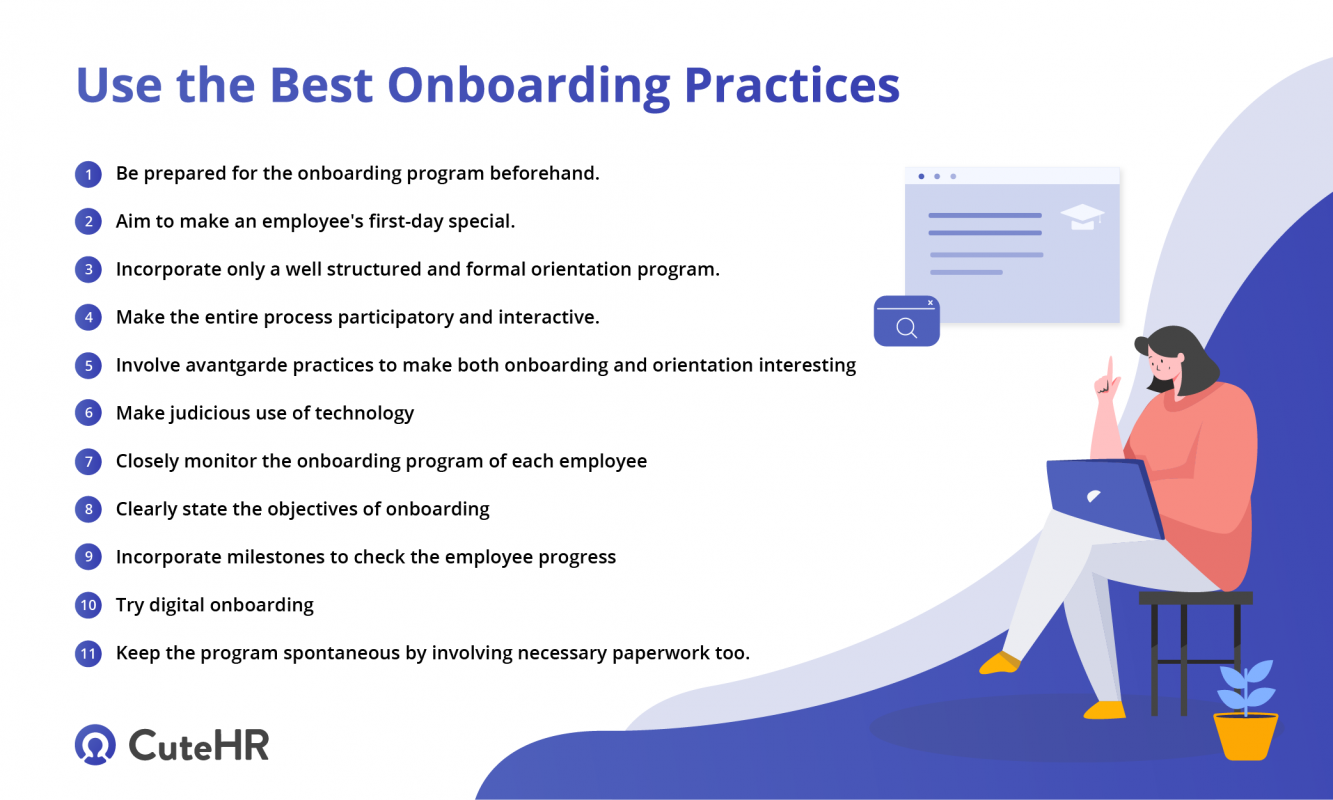
Track Onboarding
Now companies have begun to understand the need to have a functioning new employee onboarding program. But this 30-60-90 day process demands attention, as the managers of the onboarding team have to make sure that each new employee is being led in the right direction. Especially, with an ample amount of introductions, training, orientations involved, onboarding can become difficult to track. For the employees too, excessive information can become overwhelming.
Onboarding checklists can definitely be made use of here. Not only this, to introduce automation, bring about accuracy and speed up the entire process, the onboarding tracking tools are being utilised.
Effects of Onboarding
Companies and organisations following a structured onboarding process reap positive results in the long run. There is research and evidence to back this up as well.
- Boosting Confidence – The primary aim of all onboarding programs is to infuse the new recruits with enough confidence and motivation. This, in turn, will allow them to work better and yield more productivity. Regular motivation and self-efficacy will contribute to increased levels of commitment, passion and dedication towards work and the company as a whole.
- Transparency and Clarity – This is directly synonymous to how well an employee is able to comprehend the work in hand and the expectations that the new role demands. Having ambiguous expectations will be counterproductive. Companies housing employees that have a sound knowledge of the job demands are comparatively well adjusted. A clear picture of the new job demands transparency persistent in the work environment. Simultaneously, the role clarity comes with reduced conflicts. Such a workforce is indicative of a positive onboarding program in action.
- Social Inclusion – An inclusive onboarding process aims to integrate all the new employees into the workings of the company. Successful inclusion makes each and every employee feel welcomed. Research indicates that acceptance by peers is a morale booster and leads to better adjustment. Onboarding must cultivate the feeling of being wanted and build a friendly environment. Establishing relationships with peers and superiors alike will render favourable. For this to happen, formal/informal lunches, meeting deadlines, engaging in conversation and discussions or taking part in company programs serve as a medium. Successful inclusion is vital to develop confidence.
- Navigating Culture and Value Adding – It is the onboarding process that allows the new recruits to find their way around the company culture. More importantly, it is needed that all new hires get acquainted with the new work culture faster. This will present an even more comprehensive view of the company’s goals, values, politics and strategies. Such initial adjustments if provided by an onboarding program will absolutely benefit any new employee and the company as a whole. It is onboarding that detects what each new employee can bring to the organization.
- Increased Job Satisfaction – The HR department surely should adopt activities that inculcate and increases job satisfaction. Job satisfaction among new hires will lead to a lower turnover rate, promote happy and satisfied employees and give better productivity. The job satisfaction that HRM promotes can be brought about with an effective and thorough onboarding process.
As per 32% global executives, their onboarding experience was of inferior quality. To avoid this, a well knit onboarding process is mandatory.
- Retention – The rate of retention is equally indicative of how long the employees stay with an organization. Research by SHRM is evidence, as it shows that one-third of all new recruits quit their new jobs within just 6 months of joining. While those institutions that execute the onboarding process are able to successfully retain 91% of their employees in the first crucial year.
Effective onboarding yields better retention rate by 52 percent, and an increase in customer satisfaction by 53 percent and affects the productivity time by 60 percent.
Onboarding works to facilitate progress and increases fecundity of an organization by providing it’s hires with the fundamental resources that can be brought to best usage. A formal, structured onboarding program, leads to lower turnover rates, increases the organizational commitment, efficiency and improves performance.
Onboarding, Training and Orientation
More often than not it is these three terms: onboarding, orientation and training that are used interchangeably. Human Resource Management has to bring each of these to use separately. This can be done by understanding the activities involved in each.
Onboarding is a broad umbrella term which can make use of a lot of different processes. Broadly speaking, training and orientation fall under it. On the one hand, orientation is about acclimatizing all new recruits to the company and its workings. Whereas, the training covers all those exercises that enhance job performance to increase productivity. Details, clarifications, techniques that need to be explained are taught during the training period. It is key for improving self-efficacy in new hires. The training process guides and throws light on the path an employee has to follow. It aids adjustments and promotes onboarding.
Employee onboarding as necessary it is, accounts for a sum total of all these activities.
Onboarding Tools and Checklist
Business houses and organisations that make you use of a formal onboarding written plan, can reap the benefits of the onboarding process much better. A place where all the responsibilities, tasks, goals, and relevant data is written down provides for a dedicated plan and approach. With a written onboarding plan the HR executives get to organize by prioritizing things and activities accordingly. Significant to the onboarding experience, there are mentoring and job shadowing among other activities too. Research proves that new employees are better able to grasp the working of the company values and get acquainted with the culture, in the presence of a mentor.
Also Read: Workplaces need mentors, not managers
An onboarding checklist will enable the supervisors and executes of the HR department and the company to serially implement all the steps of an onboarding program successfully. For onboarding, each new hire in a proper manner, curating an onboarding checklist will be worthy. Not only this, all the different onboarding tools should be wisely brought to a specific use.
Preparing the Onboarding Checklist
Each company can prepare its own onboarding checklist, as per the available programs, resources and facilities. For every employee, there should be a separate checklist.
Highly subjected to customization, an onboarding checklist should most definitely contain the following –
- Basic Employee Information- Employee Name, Date of Joining, Position and Superior.
- Compartmentalization of onboarding period – Division of onboarding activities as per days or months.
- Policies Expansion – A list of all major company policies to go through must be written down. A few common ones are Anti-harassment, Safety, Security, Absenteeism and Vacation, Performance Reviews, Dress Code and Uniform, Confidentiality, Personal Conduct Standard, etc.
- Position Briefing – Under this a new employee should be introduced to the assigned teams, working hours, Payroll policies and procedures, Job schedules and Training plans.
- Orientation – Tour of the facility and introductions to key staff and personnel must be a part of orientation.
- Training – List the training period and the necessary trainings (if any) that the employee underwent.
- Goals – Provide a list of goals you expect your new recruits to reach and the time period for each.
- Follow up – Check with your newly hired staff at the end of a week or after frequent intervals if they’re facing any issues or are in need of any help.
By preparing an onboarding checklist as per the blueprint given above, an organization can keep up and execute successful and stress-free onboarding. The HRM can utilise this checklist and gather relevant data useful to improve and modify current and future practices.
Conclusion
The practice of onboarding makes one of the top HRM practices. As seen above, it is a key activity that determines and shapes the new employees and moulds them into efficient workers as per company norms, rules and expectations. The onboarding process made up of best practices that are carefully executed makes the entire onboarding experience a successful and rewarding one.
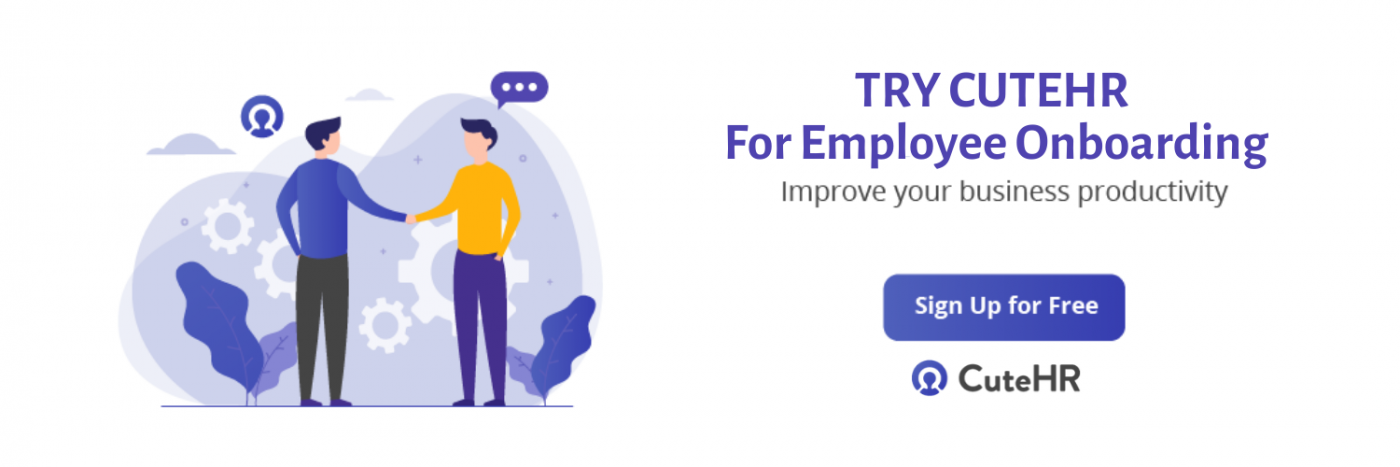
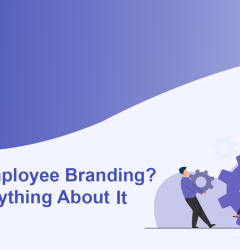
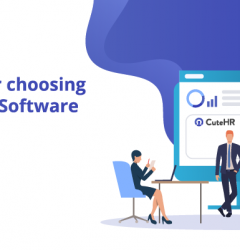










Avneet Oberoi